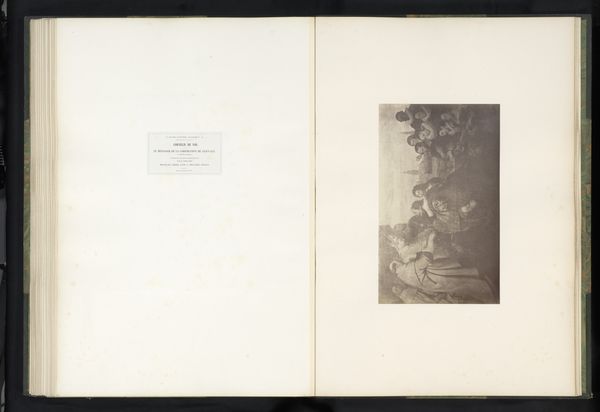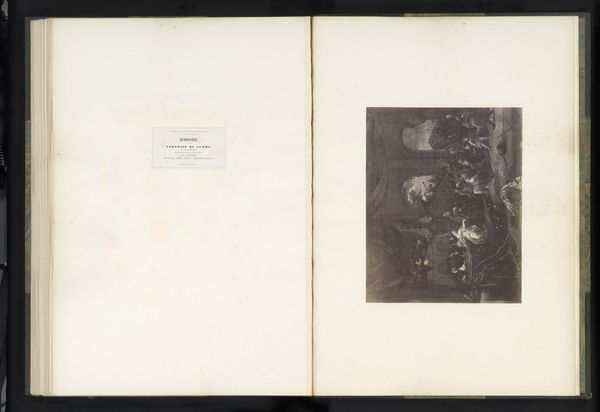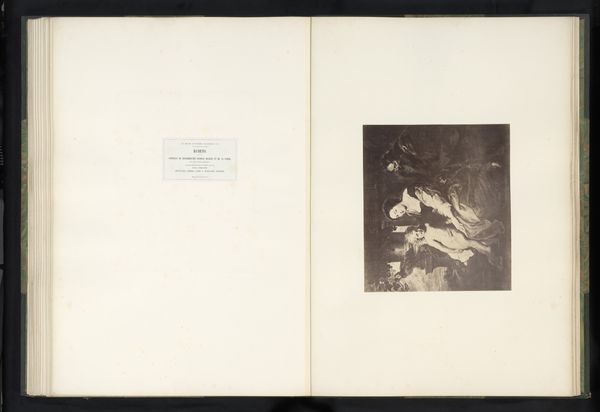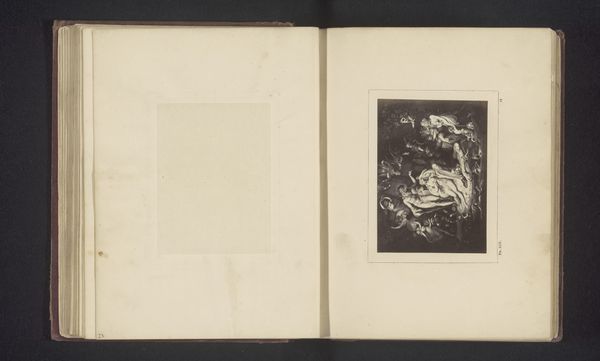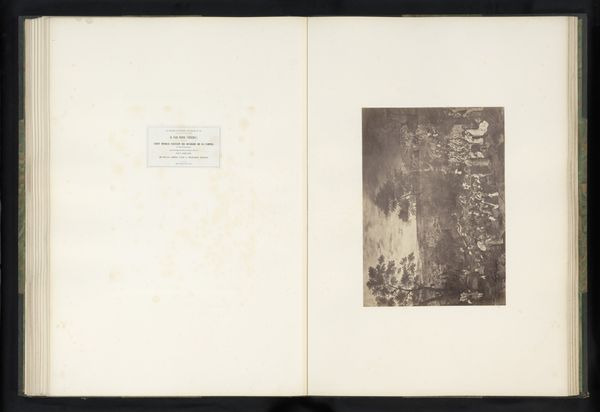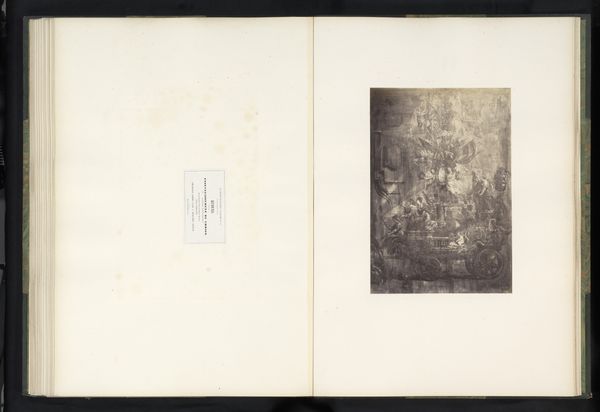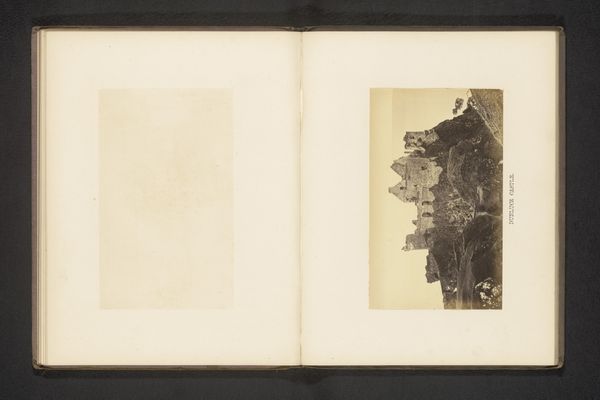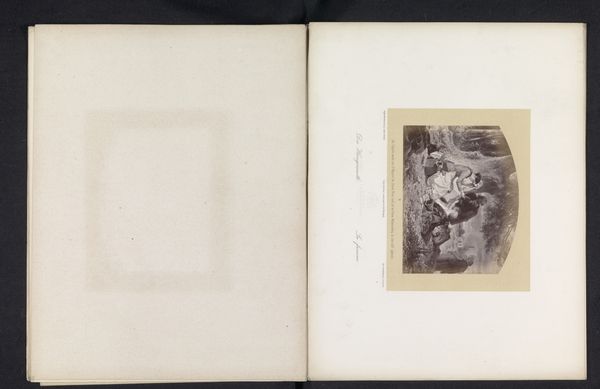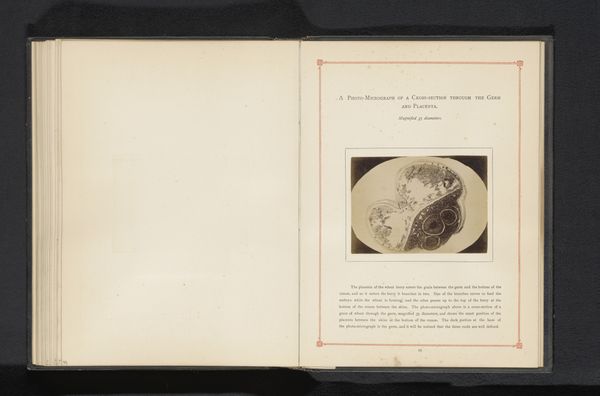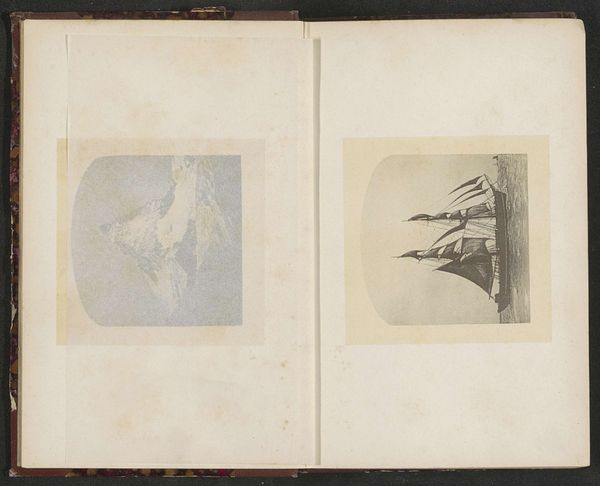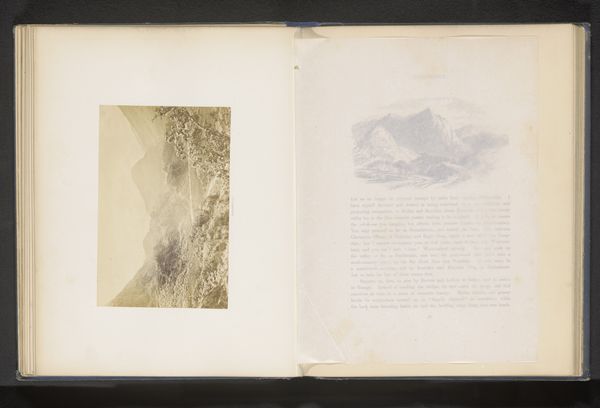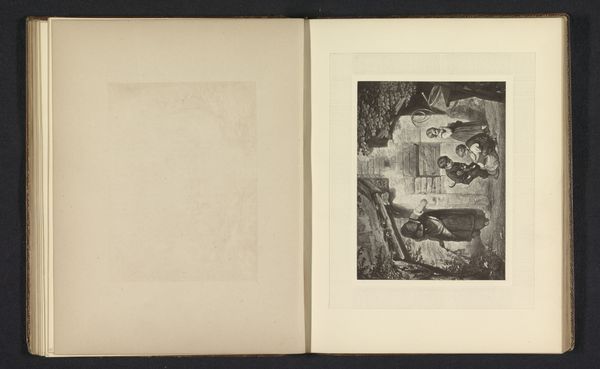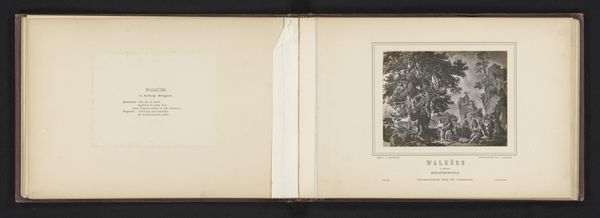
Fotoreproductie van de Bewening van Christus door Peter Paul Rubens before 1861
0:00
0:00
Dimensions: height 257 mm, width 343 mm
Copyright: Rijks Museum: Open Domain
Curator: This print, attributed to Edmond Fierlants before 1861, is a photographic reproduction of Peter Paul Rubens’ painting “The Lamentation of Christ”. The media used are etching, photography, ink and paper. Editor: My immediate impression is one of overwhelming grief, almost a suffocating darkness. The figures are entangled in such a way as to highlight the raw, almost animalistic, agony of loss. Curator: Note the strategic deployment of light and shadow; this creates drama and depth within the frame, conforming to many conventions we find in Baroque art. The stark contrast emphasises the texture of the figures, making us aware of surface quality, volume and compositional structure. Editor: Absolutely. But within that form, look at the story being told; beyond a biblical context, who has historically had the space to publicly grieve so openly? Who has not? Consider whose lamentations are sanctioned, remembered, or even seen as worthy of art? Curator: The artist employs dynamic diagonal compositions. If you examine the angle created by Christ’s body and the supporting figures, and consider it alongside its formal predecessors, one notices echoes of masters such as Caravaggio and the adoption of tenebrism. The lighting creates the perfect narrative and elevates it into a moment for grand audiences to be awestruck and inspired. Editor: But let us be wary of awe that eclipses empathy. In considering the Passion, can we not ask how institutions of power, in art as in society, continually crucify the vulnerable while celebrating a redemptive narrative that leaves them perpetually suffering? Where is the redemption for the historically disenfranchised? Curator: That contrast of light and shade and chiaroscuro is technically rendered in superb fashion through hatching and cross hatching in the medium of print, creating this grand overall, overwhelming artistic feeling that only the Baroque era can evoke in our modern world. Editor: It’s interesting how viewing something, even a reproduction of something with such complex and historical connections, forces you to examine one's relationship to grief and how we internalize such pain and its display in art and in everyday life.
Comments
No comments
Be the first to comment and join the conversation on the ultimate creative platform.
